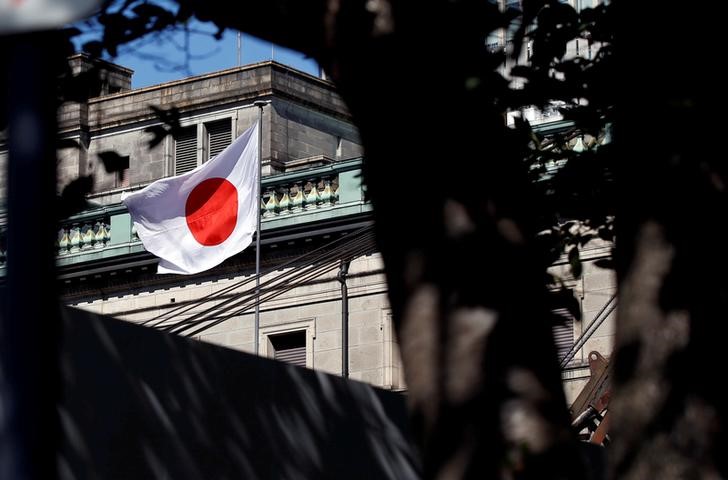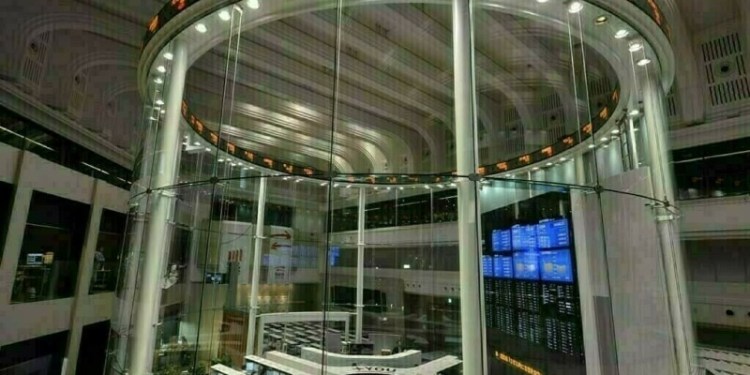 © Reuters. FILE PHOTO: A Japanese flag flutters atop the Bank of Japan building under construction in Tokyo
© Reuters. FILE PHOTO: A Japanese flag flutters atop the Bank of Japan building under construction in Tokyo2/2
By Leika Kihara and Stanley White
TOKYO (Reuters) – The Bank of Japan kept monetary policy steady on Thursday despite growing signs of strength in the economy, signaling that it was in no rush to edge away from crisis-mode stimulus with inflation still distant from its 2 percent target.
The central bank revised up its assessment of private consumption and capital expenditure, underscoring its conviction that recovery in the world’s third largest economy was gathering momentum.
Markets now turn their attention to BOJ Governor Haruhiko Kuroda’s post-meeting news conference for clues to how quickly the bank will follow in the footsteps of its U.S. and European peers in dialing back stimulus.
While Kuroda is likely to reassure markets the BOJ is nowhere near exiting ultra-loose policy, he may highlight the rising pain prolonged easing was inflicting on banks.
“As long as the government keeps a slightly expansionary fiscal policy the BOJ will keep long-term yields low,” said Masayuki Kichikawa, chief macro strategist at Sumitomo Mitsui Asset Management.
“We do, however, need to pay attention to the impact quantitative easing is having on regional banks,” he said, adding that debate on whether to raise the yield targets could emerge in the latter half of next year.
As widely expected, the BOJ kept its short-term interest rate target at minus 0.1 percent and the 10-year bond yield target around zero percent – wrapping up a year in which the central bank made no change to policy.
The decision was made by a 8-1 vote. Board newcomer Goushi Kataoka dissented for the third straight meeting, arguing that the BOJ should buy bonds so that yields for durations of 10 years and longer fall further.
UPBEAT ON CONSUMPTION, CAPEX
The BOJ has been caught in a dilemma as strength in the economy fails to translate into higher prices.
“Capital expenditure continues to increase as a trend as corporate profits and business sentiment improve,” the BOJ said in a statement announcing the policy decision.
That was a more upbeat view than at its previous meeting in October, when it said corporate spending was increasing moderately as a trend.
The central bank also said consumption was “increasing moderately,” a rosier view than in October when it said household spending was becoming increasingly resilient.
But the BOJ left unchanged its view that inflation expectations remained weak.
After three years of heavy money printing failed to fire up inflation, the BOJ revamped its policy framework last year to target interest rates instead of the rate at which it bought up financial assets.
Some BOJ policymakers have recently expressed concerns over the demerits of easing, such as the hit to bank margins, in a sign the central bank may ponder raising its yield targets or slow purchases of risky assets next year.
Japan’s economy grew an annualized 2.5 percent in July-September to mark a seventh straight quarter of expansion thanks to robust exports and capital expenditure.
But core consumer inflation remains stuck at 0.8 percent and firms polled by the BOJ expect no major pick-up in price growth in coming years.
Most economists polled by Reuters expect the BOJ’s next move to be a withdrawal of stimulus, though they do not expect such a step to be taken until late 2018 or beyond.
Source: Investing.com





























